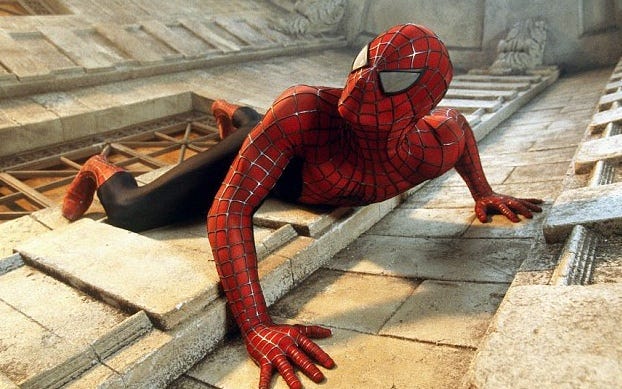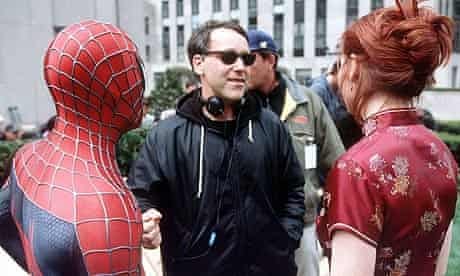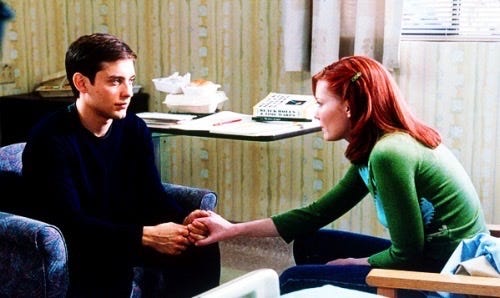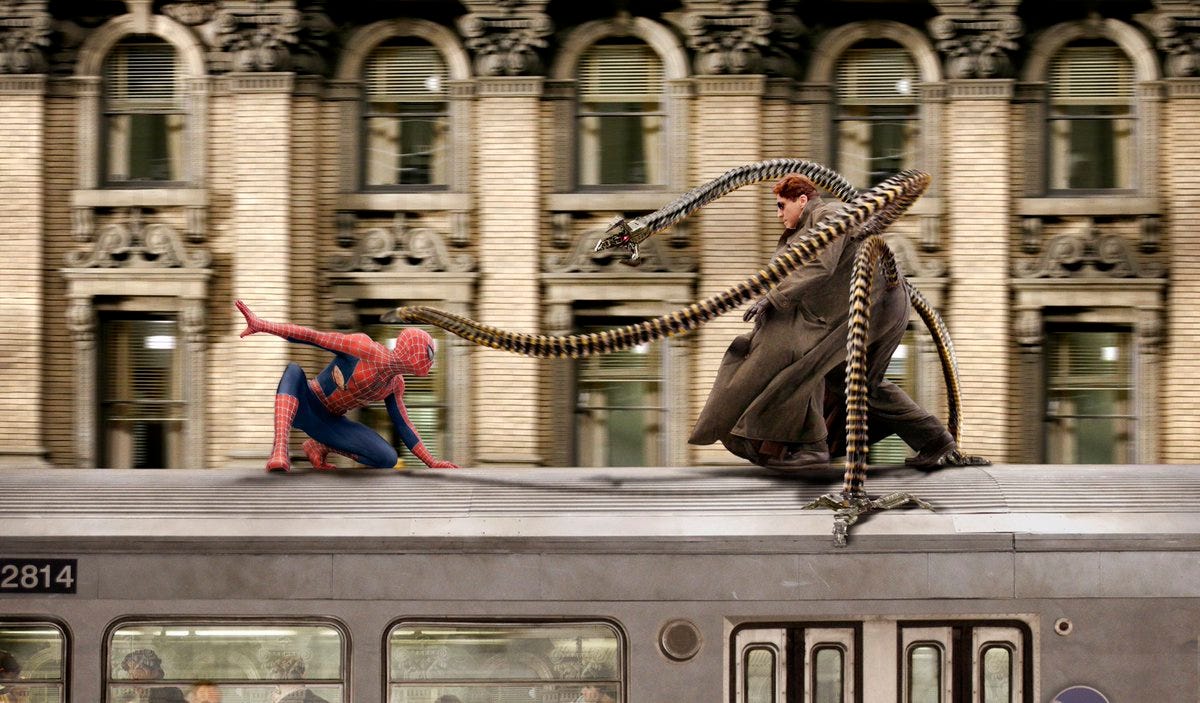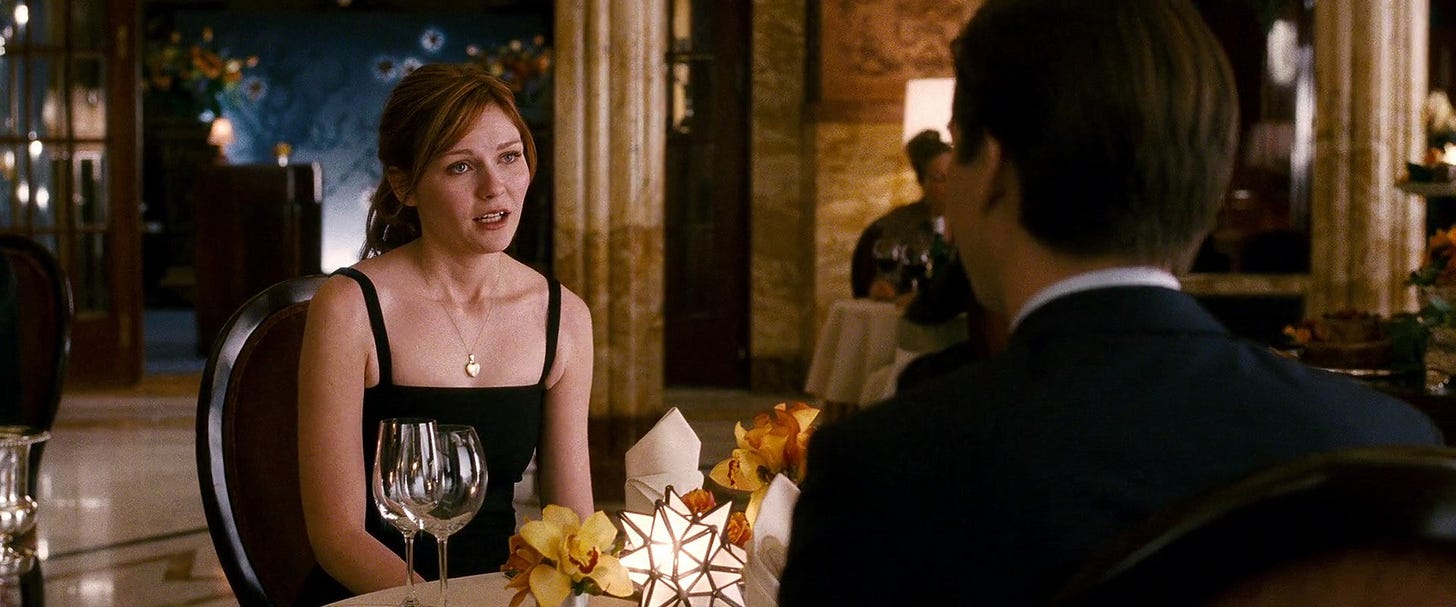Human Lens #4: The Definitive Superhero Trilogy (For people in their 20's)
Sam Raimi's Spider-Man Trilogy Pops Off
In 2002, the first movie I saw in theaters was an adaptation of the most well known and most popular Marvel Comics character of all time. Sam Raimi’s Spider-Man was an immediate hit, capturing the wonder of the comic book page on the big screen for all ages and people of all interests to enjoy. The film, as well as it’s two sequels, paved the way for the acceptance of the superhero sub-genre. Despite the popularity of the current Marvel Cinematic Universe, there’s a certain air that surrounds Raimi’s trilogy that sets it apart from everything released today.
What Raimi understood in crafting the pace and the emotion of these films was that the character of Spider-Man, of Peter Parker, was created to be relatable to the common man. He represented all the people who found it hard to see greatness in themselves. Every reader of Stan Lee and Steve Ditko’s original creation felt the grounded nature of the series. Human characters with relationship problems, familial arguments, mistakes coming back to have consequences. The character was obviously overly dramatized compared to everyday life, as all forms of media are, but it still felt real and relatable. It wasn’t aliens, super-soldiers, or Gods who could fly, it was a nerdy young man who simply wanted to aspire to be there for others. Something anyone can look up to.
Raimi, along with screenwriters David Koepp, Alvin Sargent, and Ivan Raimi, prioritized characterization over action and spectacle. In a 2004 interview with superherohype.com, Raimi says that “The more time you spend with [Peter Parker], the more you love [him], the more complexities are revealed to you.” At one point saying one of the most important things any modern blockbuster filmmaker may need a reminder of: “I didn't really think of it as a franchise movie.”
Because of this obsession of a filmmaker with what makes the character tick, the films became an amalgamation of one man’s personal journey to garnering responsibility for his own actions, his scheduled time for others, and his understanding that the world doesn’t revolve around any one person. And you may try to tell me, “Hey Derek, there’s a bunch of superhero movies that do that now,” and to that I ask you to name a recent superhero movie where even a giant action set piece is forwarding the personal journey of our main character.
I’ve hyped up the personal connection these films give to their viewers. There are three scenes in the entirety of the Spider-Man trilogy, one from each movie, that grab hold of me every time I watch them.
In Spider-Man, Aunt May is in the hospital after an attack from the Green Goblin, Peter is waiting for her to wake up when Mary Jane comes to visit. At this point, Peter is no longer the nerd from high school that everyone pushed around. He’s no longer worried about being bothered. This confidence in himself has come from his change into Spider-Man, as well as an obvious happiness to be out of high school and out in the world living his own life. When Mary Jane asks Peter what Spider-Man thinks of her, Peter finds himself in a spot that many men, including myself, would buck at. But he goes full swing (haha) into a speech of how great she is, leaving Mary Jane awestruck and putting a smile on Aunt May’s face, who’s supposed to be asleep. Quoting any of it here would give it injustice so if you haven’t seen it, sit down and watch that scene and feel the tension of love coming on in that moment.
In Spider-Man 2, Peter struggles with his duality, assuming that for his own well being and for those closest to him, giving up Spider-Man would be better for everyone. After months of standing by while people get hurt, Peter finally comes to realize, after Doctor Octopus captures Mary Jane, that no matter who he disappoints or who he may not be able to help, the city and his family and friends need Spider-Man to prosper. This culminates in the best action set piece in any superhero movie ever (and I will die on this hill), resulting in Spider-Man accepting who he is and will always be, as well as the city of New York, using Spider-Man’s image and great show of responsibility, to stand up for him when he’s down. Cinema at it’s finest.
(I know I said three scenes in three movies, but I would be remiss not to mention the excellent scene in Spider-Man 2 in Aunt May’s backyard when May and Henry tell Peter what Spider-Man means to the people of New York and the kids that look up to him.)
In Spider-Man 3, the fame of Spider-Man has gotten to Peter’s head. Even the best people on this planet get full of themselves every once in a while. At a dinner where he plans to propose to Mary Jane, Peter is hung up on the current popularity Spider-Man has. He doesn’t pick up on the sour mood Mary Jane is in, and on top of that, compares her negative acting reviews to his own experiences. He doesn't mean to be snobby on purpose, but he’s too clueless to realize the love of his life needs his ears and not his mouth. It makes me uncomfortable to watch this scene every time. He’s clueless, but it’s the start of a journey that he needs to go on to become a better man.
While these are just a few great scenes across the three films, they’re all ones that I look forward to. I feel that they each highlight the journey that Peter is going on in each film perfectly. Whether they are one-on-one conversations or they culminate into big action set pieces, these are all the trials and confidences built through the span of anybody’s 20’s. (I don’t know about you but I haven’t had any fights on top of trains yet).
Now 23, I find that these movies become more relatable and more enjoyable with each year I age. Movies are built on the backbone of all the ones that have come before, and Sam Raimi certainly understands that. He knows that audiences go to be inspired, feel seen, have an escape. The journey of Peter Parker throughout these three films says, “hey, I’ve been there too, and not only does it get better, but this needs to happen for you to become a better version of yourself.”
While Tom Holland’s Spider-Man has captured the hearts and minds of many viewers, I find that many people always come back to these original films. There’s a pull of intrigue from them that I think is shared with the original comics as well. A relatable character will always be in the forefront of viewers interest. I guarantee that when the Holland fans get older, they’ll flock back to these Raimi films with a newfound appreciation and connection to them.
I await Sam Raimi’s return to superheroes with the upcoming Doctor Strange sequel, and hope that in the chaos of multiverses, magic, and the usual MCU explosiveness, he’ll be able to take a step back and put his own language into the movie. Audiences, and the continuing state of the movies, will be better for it.
I now leave you with one of the best line reads in movie history: “Let’s get some lunch some evening!”



